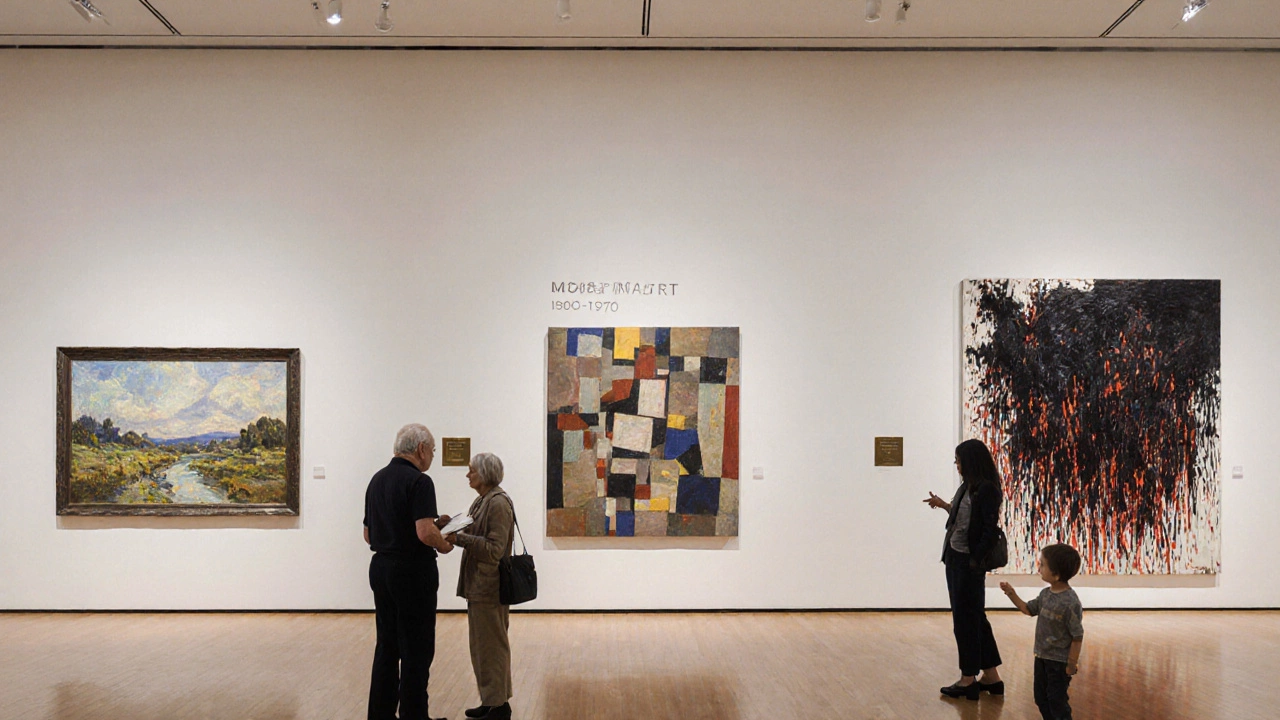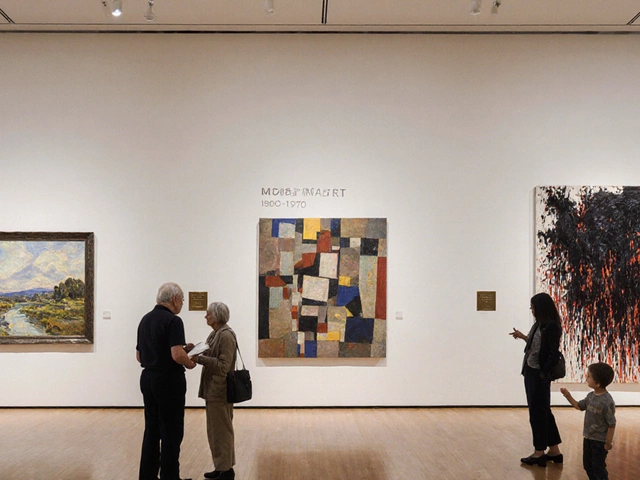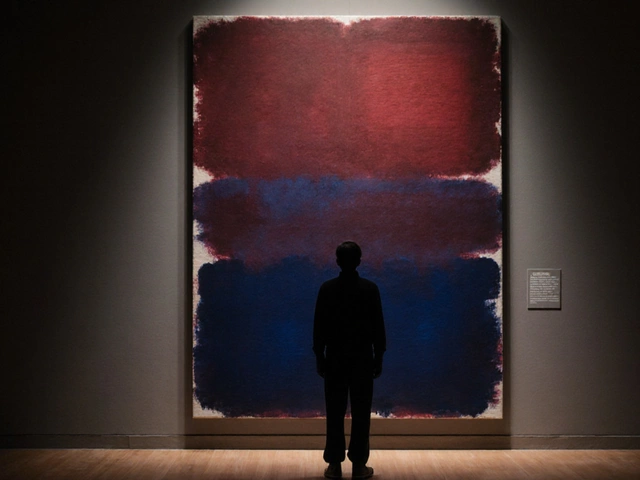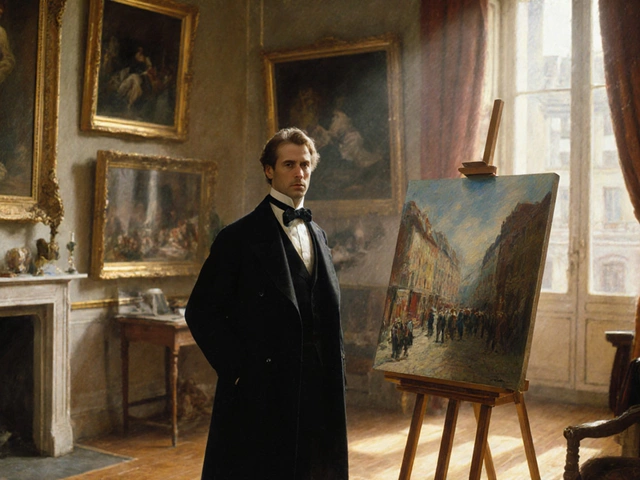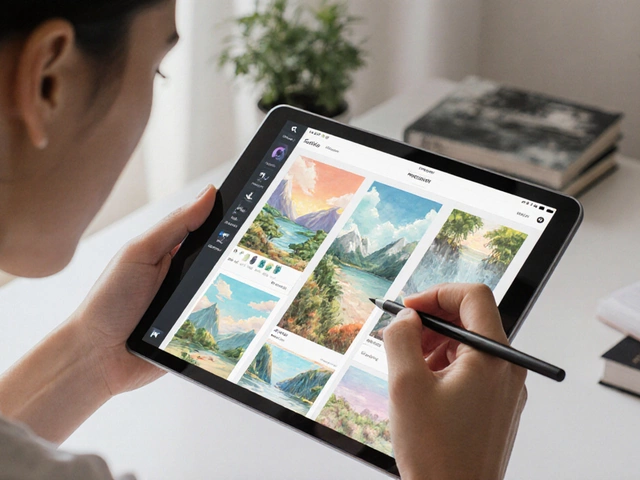Art Period Identifier Tool
Artwork Identification Tool
Identify whether an artwork is more likely Modern or Contemporary based on key characteristics from the article.
Result will appear here
Key Takeaways
- Modern art covers roughly 1860‑1970 and is tied to industrialization, abstraction, and a break from realism.
- Contemporary art starts around the 1970s and reflects today’s social, technological, and cultural concerns.
- Look at dates, philosophy, and media to tell the two apart.
- Museums often bucket works by the period when they were created, not just by style.
- Common myths-like "modern = old"-are easy to debunk once you know the timelines.
The term modern art often gets tangled with contemporary art, but they refer to distinct periods and ideas.
What Is Modern Art?
When people mention Modern Art is a movement that emerged in the late 19th century and peaked in the mid‑20th century, emphasizing a break from traditional representation, the rise of abstraction, and a focus on the artist’s inner vision. It grew out of rapid industrial change, scientific discovery, and the trauma of two world wars.
Key hallmarks include:
- Rejection of realistic depiction in favor of stylized forms.
- Exploration of pure color, shape, and line.
- Philosophical links to ideas like “art for art’s sake.”
Notable sub‑movements that sit under the modern umbrella are Impressionism (late 19th‑century French painters capturing light and fleeting moments), Cubism (early 20th‑century fragmentation of objects into geometric planes), and Abstract Expressionism (post‑World WarII American painters emphasizing spontaneous, gestural brushwork).
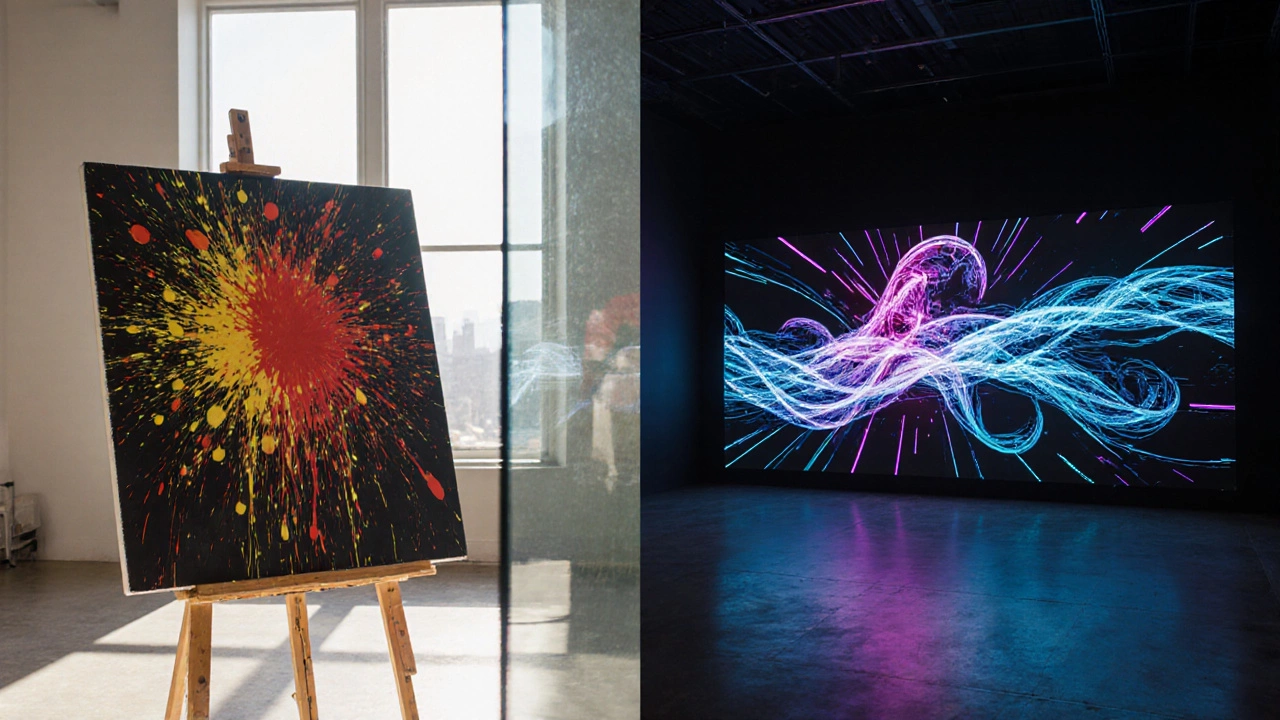
What Is Contemporary Art?
Contemporary Art refers to art created from roughly the 1970s to the present day, reflecting the concerns of today’s globalized, digitized society. It’s less a single style and more a diverse field that embraces any medium, concept, or platform.
Typical traits:
- Use of new technologies: video, digital media, installation, and internet‑based work.
- Direct engagement with politics, identity, and environmental issues.
- Blurring of boundaries between art, design, and everyday life.
Major currents include Digital Media (art created or presented through computers, VR, and online platforms), Pop Art (late‑20th‑century works that recycle commercial imagery, still alive in contemporary practice), Minimalism (reduction to basic forms and materials, influencing many contemporary installations), and Street Art (public‑space interventions ranging from graffiti to large‑scale murals).
Timeline: Where Modern Ends and Contemporary Begins
The dividing line isn’t a hard cut, but most scholars agree on a few key moments:
- Late 1960s‑early 1970s: The rise of Conceptual Art and performance shifts focus from object‑making to ideas.
- 1975‑1985: The advent of personal computers and video art expands the toolkit.
- 1990s‑present: Globalization, the internet, and social media accelerate the speed at which artists respond to current events.
Because the world changed dramatically after WorldII, many label the post‑1970s period as "contemporary" to signal a new cultural paradigm.
Stylistic Cues: How to Spot a Modern Piece vs. a Contemporary One
When you stand in front of a painting or sculpture, ask yourself these quick questions:
- Date of creation: If the work is dated before 1970, it’s almost certainly modern.
- Medium: Oil on canvas, marble, bronze, or early photography point to modern. LED, 3‑D printing, augmented reality signal contemporary.
- Subject matter: Modern works often explore formal concerns-color, shape, perspective-while contemporary pieces tend to embed social commentary, identity politics, or technology.
- Presentation: Traditional gallery walls versus site‑specific installations, interactive screens, or crowd‑sourced projects.
For example, a 1950s abstract canvas by Jackson Pollock (modern) relies on drip technique and manual brushwork. A 2022 projection-mapped piece by Refik Anadol (contemporary) uses data streams and real‑time algorithms to create an ever‑changing visual field.
How Museums and Galleries Classify Works
Curators usually follow two practical rules:
- Creation date: The primary tag-"Modern" or "Contemporary"-matches the year the piece was made.
- Conceptual framing: Even a 1965 work can be shown in a contemporary context if its ideas anticipate later trends, but it will still carry a modern date label.
Many major institutions, such as the Museum of Modern Art (MoMA) and the Tate Modern, keep separate wings: the "Modern" collection (1860‑1970) and the "Contemporary" galleries (post‑1970). This helps visitors navigate the historical shift while still appreciating thematic connections.
Common Misconceptions
Myth #1: "Modern art is old, contemporary art is new."
Reality: "Modern" refers to a specific historical period, not simply age.
Myth #2: "All contemporary art is digital."
Reality: While technology is huge, contemporary artists also work with paint, sculpture, performance, and craft.
Myth #3: "Modern art is all abstract, contemporary is all representational."
Reality: Both periods contain pure abstraction and figurative work; the difference lies in intent and context.
| Attribute | Modern Art | Contemporary Art |
|---|---|---|
| Typical Timeframe | c. 1860 - 1970 | c. 1970 - present |
| Core Philosophy | Break from tradition, focus on form and pure visual experience | Engagement with current issues, interdisciplinary experimentation |
| Common Media | Oil, watercolor, sculpture in stone/bronze, early photography | Digital video, installation, performance, mixed media, internet platforms |
| Representative Movements | Impressionism, Cubism, Abstract Expressionism | Digital Media, Street Art, Conceptual Art, Post‑Internet Art |
| Typical Exhibition Spaces | White‑wall galleries, museums built in mid‑20th century | Alternative venues, public spaces, virtual galleries |
Mini FAQ
Is "modern art" the same as "contemporary art"?
No. Modern art refers to a defined historical period roughly between 1860 and 1970, while contemporary art covers works created from the 1970s onward and reflects today’s cultural climate.
Can a contemporary artist use "modern" techniques?
Absolutely. Many contemporary creators deliberately borrow modernist styles-think of painters who echo Rothko’s color fields-but they place those techniques in a current context, often adding new media or commentary.
How do I know if a museum piece is modern or contemporary?
Check the label for the creation date. If it’s before 1970, it’s cataloged as modern. If it’s after, it falls under contemporary. Curatorial notes often explain why a work is placed in a particular wing.
Why does the distinction matter for collectors?
Modern works are generally older, often with established provenance and higher auction records, while contemporary pieces can be riskier but offer opportunities to support living artists and shape future art history.
Is street art considered modern or contemporary?
Street art is a contemporary phenomenon. Its roots trace back to the 1970s onward, and it frequently uses digital tools, social media, and public engagement as core components.
